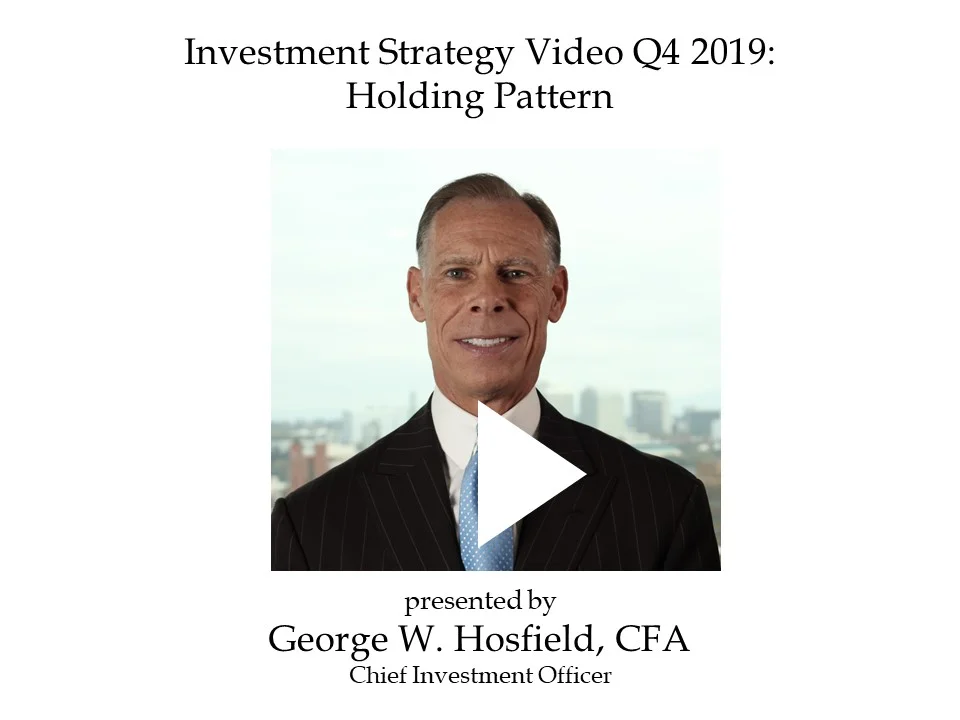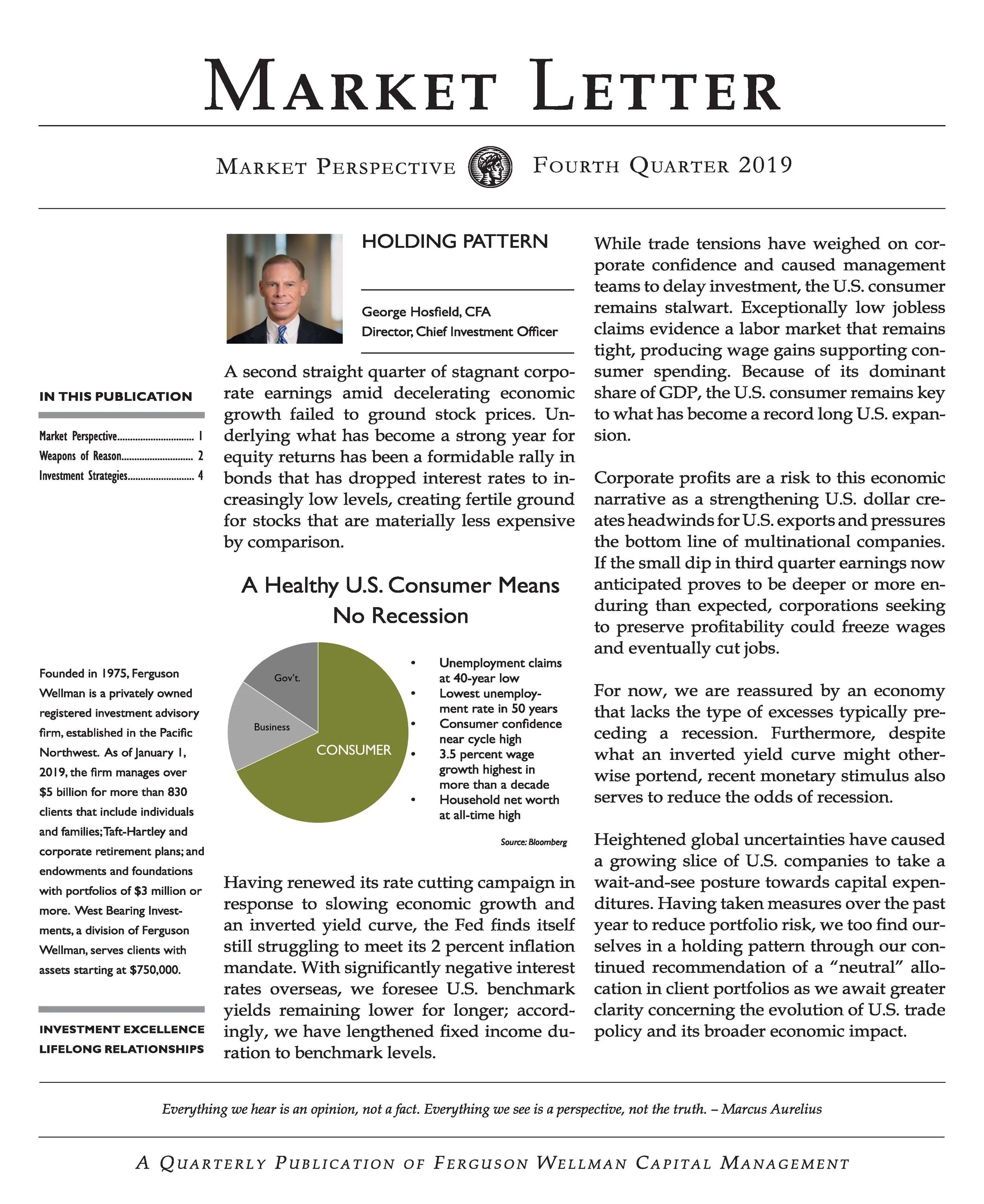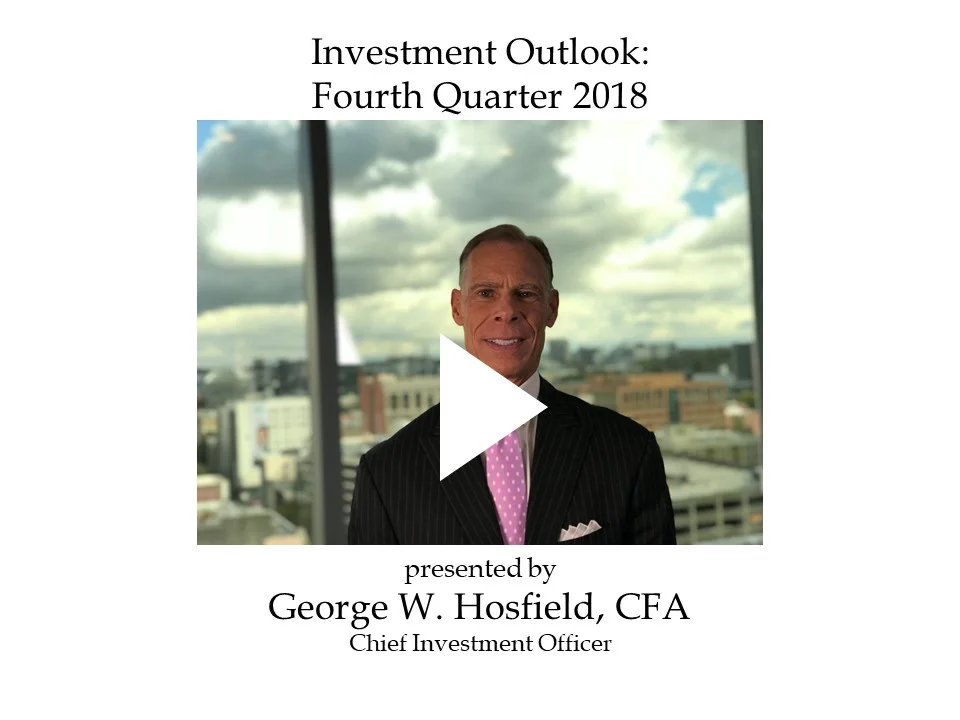We are pleased to present our Investment Strategy Video for the second quarter of 2020 titled, “Gimme Shelter.”
High Anxiety
Staying in touch with clients is critical during such extreme market volatility. Admittedly these are highly stressful and uncertain times for everyone. It is paramount that we stay safe, remain calm and strive to make decisions that are aligned with our long-term goals … not current headlines.
Investment Outlook Video Q1 2020: Age Is Just a Number
George Hosfield, CFA, chief investment officer for Ferguson Wellman and West Bearing Investments, shares the firm’s outlook for 2020.
Outlook 2020
Having climbed the proverbial “wall of worry,” all the major domestic equity indices are poised to end the year at, or near all-time highs. In fact, it was a great year for virtually every asset class as bonds enjoyed their best return in a decade, international equities returned roughly 20 percent and real estate and commodities have also prospered.
Investment Strategy Video Fourth Quarter 2019: Holding Pattern
Fourth Quarter Market Letter 2019: Holding Pattern
Investment Strategy Video Third Quarter 2019: Mounting Headwinds
Market Letter Third Quarter 2019: Mounting Headwinds
Second Quarter 2019 Investment Strategy Video: Delayed Arrival
2019 Market Letter Q2: Delayed Arrival
Q1 2019 Investment Outlook Video
Outlook 2019
After six years of exceptionally low “turbulence,” volatility returned with a vengeance last year. We expect this bumpy flight path to persist as investors digest slowing economic expansion, materially lower earnings growth and broadening trade and political tensions.
Q4 2018 Investment Strategy Video
2018 Q4 Market Letter
Q4 2018 Investment Strategy Video
Q3 2018 Investment Strategy Video
2018 Q3 Market Letter
Q2 2018 Investment Strategy Video
2018 Q2 Market Letter
Capital Markets Update, February 5, 2018: Correction Versus a Bear Market
NOTE: This communication was originally sent to clients on February 5, 2018.
As we entered 2018 our expectations were for the market to be positive for a 10th consecutive year, but we felt that volatility would return. In the past week, market volatility has returned in a big way. Since January 26, the S&P 500 is down 7.5 percent. This represents the biggest selloff since the China growth scare of January 2016. This correction takes the S&P 500 to negative-1 percent for the year.
Market corrections within bull markets are a common occurrence, yet never pleasant. In our Investment Outlook this year we highlight the difference between a market correction and a bear market. The chart below shows that when a correction occurs in a growing economy the average market selloff is about 13 percent, and it takes about six months to return to even. When a market correction is associated with a recession, the market drops an average of 34 percent and it can take up to three years to get back to even. We believe this is a correction, and not a bear market.
The irony of this selloff is there just may be too much good economic news. The market is selling off over the concern that growth and inflation will accelerate, causing the Fed and possibly other central banks around the world to tighten more than is expected. The market is undergoing an adjustment of expectations around rate hikes and interest rates. Our view is that interest rates will go up this year, but not enough to slow global economic growth.
Recent volatility is not causing us to change our stance on asset allocation. We remain neutral in our clients’ target stock-to-bond ratio. If there is cash in a portfolio that is waiting to be invested, we are using this pullback as an opportunity to deploy that cash. We urge clients to remain patient in the face of market volatility. While we don’t know how long this selloff will last, we do know that selling into weakness is rarely, if ever, a good decision. We continue to believe the S&P 500 will be higher at the end of the year, but volatility has returned.
If you have any questions or concerns, please contact your portfolio manager.





















